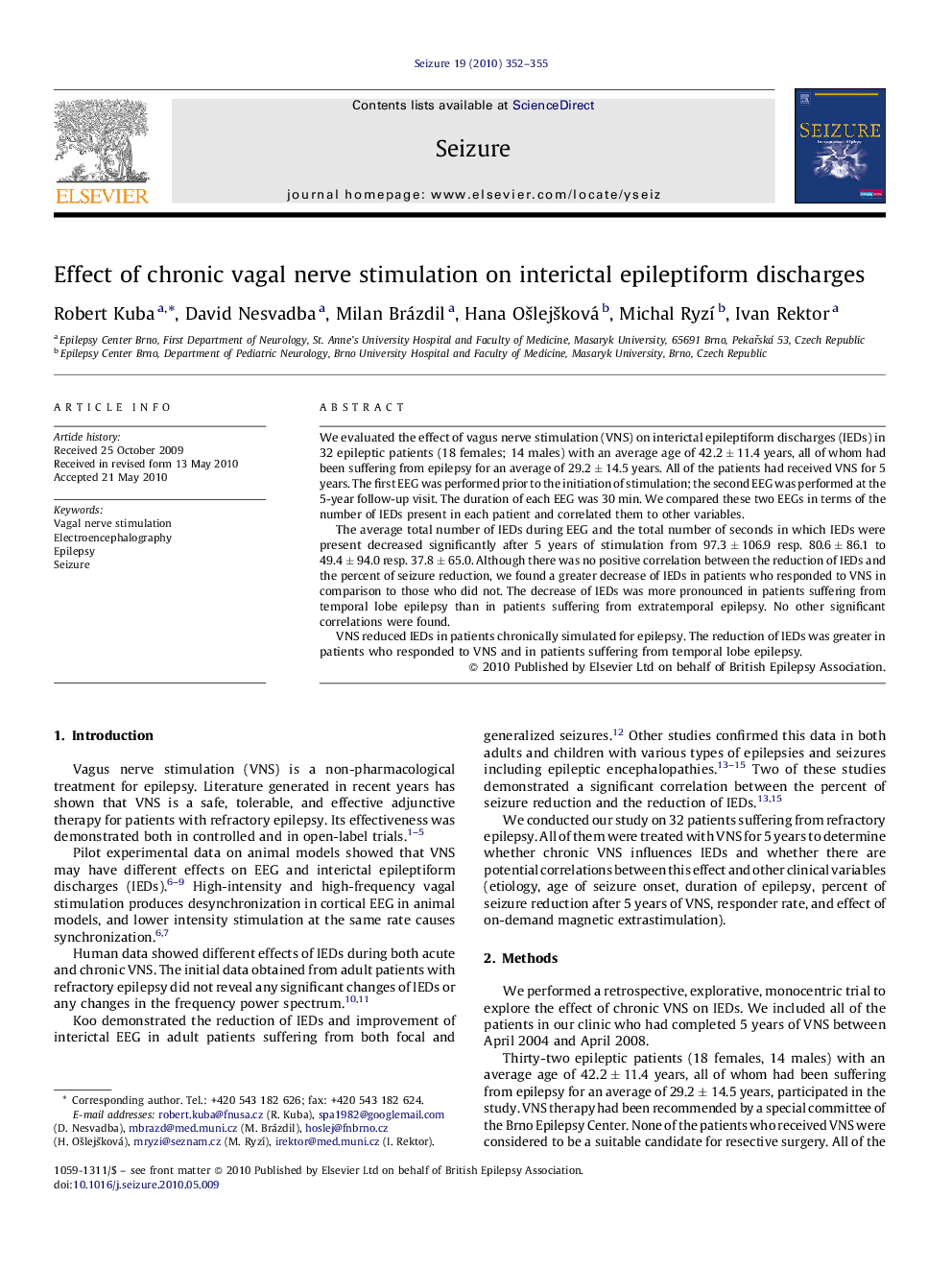| کد مقاله | کد نشریه | سال انتشار | مقاله انگلیسی | نسخه تمام متن |
|---|---|---|---|---|
| 340720 | 548352 | 2010 | 4 صفحه PDF | دانلود رایگان |

We evaluated the effect of vagus nerve stimulation (VNS) on interictal epileptiform discharges (IEDs) in 32 epileptic patients (18 females; 14 males) with an average age of 42.2 ± 11.4 years, all of whom had been suffering from epilepsy for an average of 29.2 ± 14.5 years. All of the patients had received VNS for 5 years. The first EEG was performed prior to the initiation of stimulation; the second EEG was performed at the 5-year follow-up visit. The duration of each EEG was 30 min. We compared these two EEGs in terms of the number of IEDs present in each patient and correlated them to other variables.The average total number of IEDs during EEG and the total number of seconds in which IEDs were present decreased significantly after 5 years of stimulation from 97.3 ± 106.9 resp. 80.6 ± 86.1 to 49.4 ± 94.0 resp. 37.8 ± 65.0. Although there was no positive correlation between the reduction of IEDs and the percent of seizure reduction, we found a greater decrease of IEDs in patients who responded to VNS in comparison to those who did not. The decrease of IEDs was more pronounced in patients suffering from temporal lobe epilepsy than in patients suffering from extratemporal epilepsy. No other significant correlations were found.VNS reduced IEDs in patients chronically simulated for epilepsy. The reduction of IEDs was greater in patients who responded to VNS and in patients suffering from temporal lobe epilepsy.
Journal: Seizure - Volume 19, Issue 6, July 2010, Pages 352–355